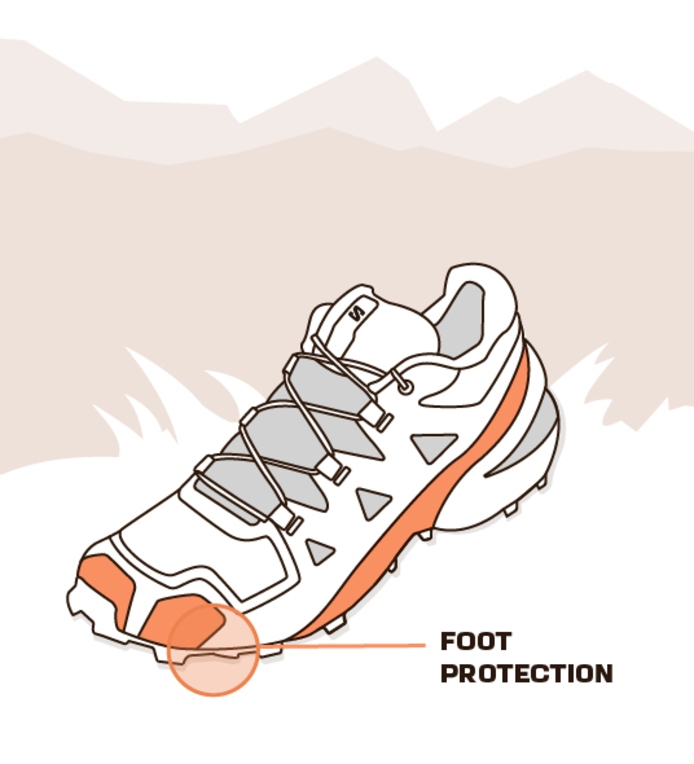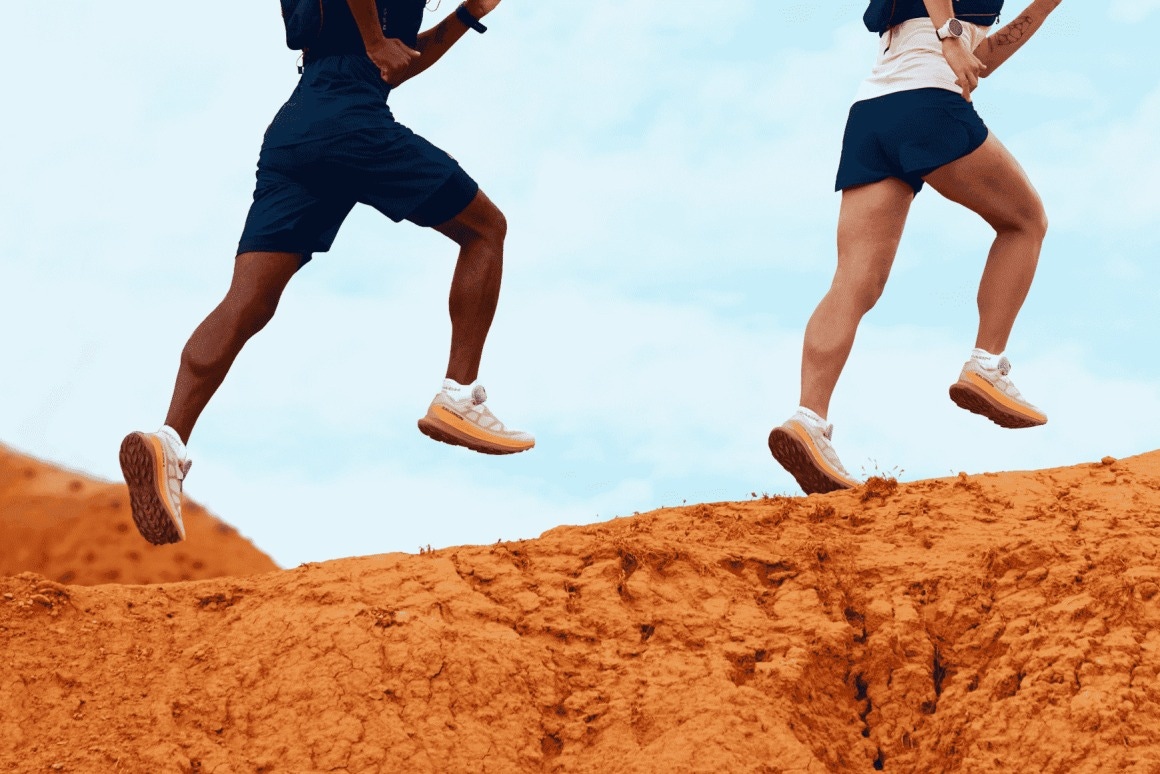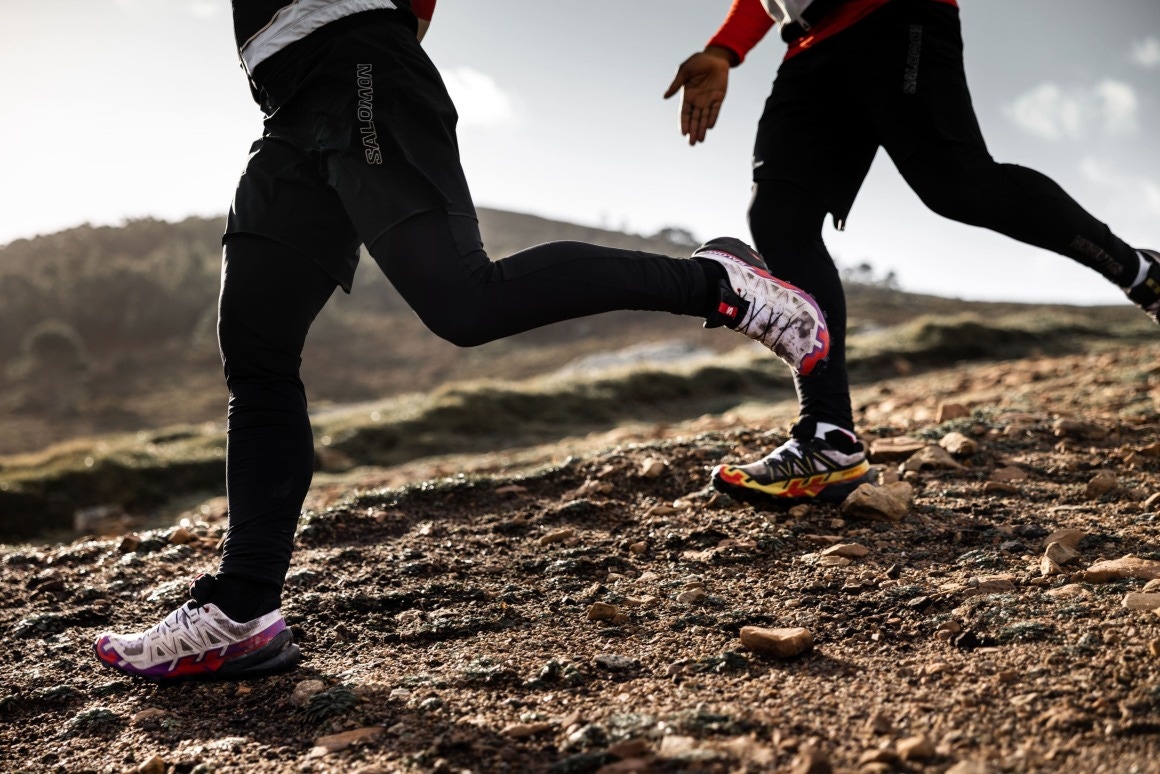Trail running involves running off the beaten track. It’s often considered to be a completely different sport to road running, but in fact, there are many similarities. They do, of course, take place in two very different environments but the main principle is the same; you have to put one foot in front of the other! However, the big difference in environment means that the runner's requirements are also different. So let’s start by looking in more detail at shoes.
What are the differences between trail running shoes and road running shoes?
The main differences between trail running shoes and road running shoes are in relation to the type of running surface. For trail running, it is best to have shoes with good tread as well as built-in protection, foot support, and stability for uneven surfaces.

Tread

The deeper the lugs (cleats on the outsole), the better traction the shoe will give you in muddy terrain. Whereas shorter, more closely spaced lugs are enough for hard-packed, dry trails and they will give you more stability and efficiency.
Many trail running shoes have a versatile outsole that can be used on virtually any terrain.

Foot protection

Trail running shoes generally have built-in protection. Rock plates protect your forefoot from rocky trails and toe guards and uppers add additional protection against rocks and sharp vegetation.
As a result, trail running shoes are generally very durable despite the rough terrain that they can encounter.

Foot support for greater security

Your instep must be well supported to keep your foot solidly in place when running on rugged terrain or on rough, steep trails.

Stability for uneven terrain

Cushioning and support provided from a stiffer shoe can help increase the level of stability. This will also allow room for error and give you more confidence.
Unlike in road running, pronation support is not such an issue as on uneven terrain your foot is always adjusting to the surface.
Women's trail running shoes Men's trail running shoes
What features should I look for in my trail running shoes?
Having a specially designed trail running shoe for the terrain you’ll be running on can help increase your confidence and skill on the trail, but there are endless options out there and it can get very confusing in choosing the correct one. Don’t panic! You just have to ask yourself the right questions:
How am I going to use my shoes?
You need to ask:
- What type of terrain am I going to be running on?
- What are my running goals?
- What distances will I be covering?


Terrain
- On UNSTABLE OR MUDDY TERRAIN you’ll need a more aggressive tread with deep and widely spaced lugs so that the mud doesn’t get trapped in the tread. A well-supported instep will help you deal with all uneven trail surfaces and help you keep your balance.
- On ROUGH, ROCKY TERRAIN, you will need a stiffer outsole for more stability. Reinforced uppers will help protect your foot from stones.
- Will you be running on a VARIETY OF TERRAIN and mainly on hard-packed trails? If so, you will need a shoe that is lightweight and versatile with shorter (no more than 4mm), more closely spaced lugs. That should give you enough grip on most surfaces and improve efficiency. The thinner outsole will make the shoe light and stable (less likely to wear away the lugs and your foot is closer to the ground). Lastly, flexible shoes will make foot placement a breeze in fast sections of the run.
- If the SNOW and ice don’t deter you, your shoes should have good tread with deep lugs and metal studs. Look for good support and extra protection against the elements. Integrated gaiters and a waterproof membrane will ensure your feet stay warm and dry.
Goals and training volume
--If you are new to trail running and want to run a few times a month then you should choose lightweight and versatile shoes. You should make sure they fit well and are comfortable before you buy them.
--If you are a more seasoned trail runner and are looking to improve your performance, your shoes should have built-in protection and provide good support. They will be perfect for long hours of intense training.
--If you are looking to be competitive at the front of the field, you will want to go for the featherweights! Very lightweight, technical shoes that are made for precision, performance and specific trail surfaces will serve you best, with just enough comfort and cushioning to avoid getting injured.
Distances
The distances that you will cover are another factor that should help you in your choice. For short distances (less than 15km) you should look for lightweight and responsive shoes. For middle distances (25 – 50 km) classic, all-round shoes are more suitable. For more than 50km and ultra-trails, shoes with built-in protection and cushioning will give you more comfort.
The distances you run can influence your choice in terms of drop and cushioning.
Take into account your physical characteristics
It’s clear that your physical build will influence your choice. Those of a bigger build should look for shoes with built-in protection and cushioning. Those of a slighter build may want to choose a lightweight, responsive shoe.
When trying the shoes, if they rub or pinch your feet you should reject them immediately. Even if the shoes are on sale, if they fit poorly they will not get better with use. Shoe size is also an important component to consider. It’s best to try shoes at the end of the day due to our feet swelling just like they will during a long trail run, and you should have about a 1cm gap between your toes and the end of your shoe to prevent blisters on your toes or black toenails.
The criteria that you use to choose your shoes will change with experience. As for the colour, only you can decide!
When choosing your trail running shoes, you must consider:
- The main types of trail you run on (unstable, rocky or varied)
- Your goals and how often you train (occasional, experienced, training or racing)
- The distance you run (short distance, ultra trail)
One of the most important aspects of choosing a shoe is the fit. If it doesn't fit and you don't like wearing it, running won't be fun.

Max King
You should also consider:
- Your physical build
- How the shoes fit (support, comfort, size)
- Your previous experience and running ambitions
Learn more on our Stories & Guides trail running page.














